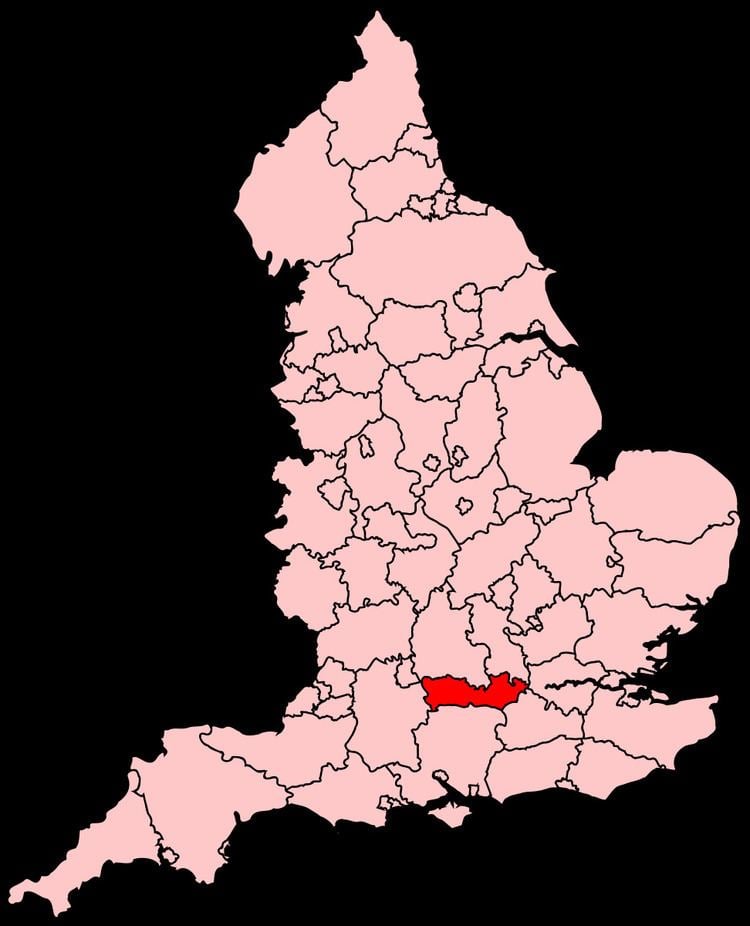Created 1885 European Parliament constituency South East England Number of members 1 | Electorate 77,898 (December 2010) | |
 | ||
Major settlements | ||
Newbury is a constituency represented in the House of Commons of the UK Parliament since 2005 by Richard Benyon, a Conservative.
Contents
Profile
The constituency consists of most of West Berkshire and includes Newbury, Thatcham and Hungerford. To the east, the rest of West Berkshire is incorporated into the Wokingham and Reading West constituencies.
Since its creation it has been a Conservative or Liberal/Liberal Democrat seat, sometimes seemingly marginal and sometimes seen as a safe seat, with a tendency towards being Conservative. West Berkshire which is similar to its neighbours has a rather thriving economy with the headquarters of the communications company Vodafone that has created a cluster of around 80 mobile phone related businesses in Newbury, while the Lambourn area is the second most important centre for the racehorse industry in Great Britain, employing over 800 people directly, and producing an annual income of £20 million.
West Berkshire is also home to Atomic Weapons Establishment, near Aldermaston, Wolseley plc, Bayer and Pepsico. There are high proportions of detached and semi-detached housing, and lower than average dependency on social housing. The seat includes the former family home of Catherine, Duchess of Cambridge, wife of Prince William, Duke of Cambridge in Bucklebury.
The constituencies bordering Newbury (clockwise from north) are: Wantage, Henley, Reading West, Wokingham, Basingstoke, North West Hampshire and Devizes.
Boundaries
1885-1918: The Municipal Boroughs of Newbury and Reading, the Sessional Divisions of Ilsley, Lambourn, Newbury (including Hungerford), and Reading (except the civil parishes of East Swallowfield and West Swallowfield), and part of the Sessional Division of Wokingham.
1918-1950: The Municipal Boroughs of Newbury and Wokingham, the Rural Districts of Hungerford and Newbury, and parts of the Rural Districts of Bradfield and Wokingham.
1950-1955: The Municipal Borough of Newbury, and the Rural Districts of Bradfield, Hungerford, and Newbury.
1955-1974: The Municipal Borough of Newbury, the Rural Districts of Bradfield, Hungerford, and Newbury, and the County Borough of Reading wards of Norcot and Tilehurst.
1974-1983: The Municipal Borough of Newbury, and the Rural Districts of Bradfield, Hungerford, and Newbury.
1983-1997: The District of Newbury wards of Aldermaston, Basildon, Beenham, Bradfield, Bucklebury, Burghfield, Chieveley, Cold Ash, Compton, Craven, Downlands, Falkland, Greenham, Hungerford, Kintbury, Lambourn Valley, Mortimer, Northcroft, St John's, Shaw-cum-Donnington, Speen, Thatcham North, Thatcham South, Thatcham West, Turnpike, and Winchcombe.
1997-2010: The District of Newbury wards of Aldermaston, Basildon, Beenham, Bradfield, Bucklebury, Chieveley, Cold Ash, Compton, Craven, Downlands, Falkland, Greenham, Hungerford, Kintbury, Lambourn Valley, Northcroft, St John's, Shaw-cum-Donnington, Speen, Thatcham North, Thatcham South, Thatcham West, Turnpike, and Winchcombe.
2010-present: The District of West Berkshire wards of Aldermaston, Basildon, Bucklebury, Chieveley, Clay Hill, Cold Ash, Compton, Downlands, Falkland, Greenham, Hungerford, Kintbury, Lambourn Valley, Northcroft, St John's, Speen, Thatcham Central, Thatcham North, Thatcham South and Crookham, Thatcham West, and Victoria.
History
Originally, Newbury was part of a larger constituency of Berkshire, which returned two Members of Parliament (MPs), increased to three in the Reform Act of 1832. In the Redistribution of Seats Act of 1885 Berkshire was divided into three county constituencies, Northern (Abingdon), Southern (Newbury), and Eastern (Wokingham), returning one member each and one borough constituency, Reading and two members per constituency ceased, as with most of the country.
The constituency in 2010 produced the third lowest share of the vote for Labour (4.3%), one of five lost deposits for Labour nationally), below the 5% of the vote deposit threshold.
Members of Parliament
An incumbent MP has been defeated just four times, in the elections of 1906, 1923, 1924, and 2005.
Elections in the 2000s
The 2001 general election saw David Rendel returned with a smaller majority of 2,415. Turnout was above average at 67.3%.
Elections in the 1990s
In the 1997 general election, contrary to many expectations, David Rendel managed to keep hold of his seat.
The Newbury by-election of 1993 was held after Judith Chaplin died. It was won by David Rendel with an impressive swing of 28.4%. However, turnout was down on the previous year at 71.3%. The by-election in Newbury was the first in a string of by-election losses for the Conservative Party. It is also famed for having a very long ballot paper.
In the 1992 general election the new Conservative Party candidate won the seat with an absolute majority. The turnout was 82.76%, higher than the nationwide average. Labour achieved their fifth worst result of the 1992 election in Newbury with only a 6.0% share of the vote.
Elections in the 1970s
After the 1970 general election, Newbury's boundaries were altered to reduce the size of the electorate which had grown to over 85,000. After the boundary changes, the electorate numbered around 72,000 people. This came into effect for the first general election in February 1974.
Elections in the 1930s
In the 1931 general election, Howard Clifton Brown of the Conservative Party was re-elected unopposed.
Elections in the 1920s
The by-election of 10 June 1922 saw Howard Clifton Brown returned as Newbury's MP unopposed.
Elections in the 1910s
The 1918 general election saw William Arthur Mount returned unopposed.
Elections in the 1900s
In the 1906 general election the Liberal candidate, Frederick Mackarness won with a majority of 402 votes. Nationally there was also a large swing to the Liberal party, with the Conservatives losing 246 seats in total.
In the 1900 general election William Arthur Mount (Conservative) was returned as Newbury's MP unopposed.
Elections in the 1880s
In the general election of 1886 William George Mount (Conservative) was returned as Newbury's MP unopposed.
In the first general election in the Newbury constituency William George Mount for the Conservative Party won with a small majority of 202 votes over his Liberal opponent, G. Palmer.
